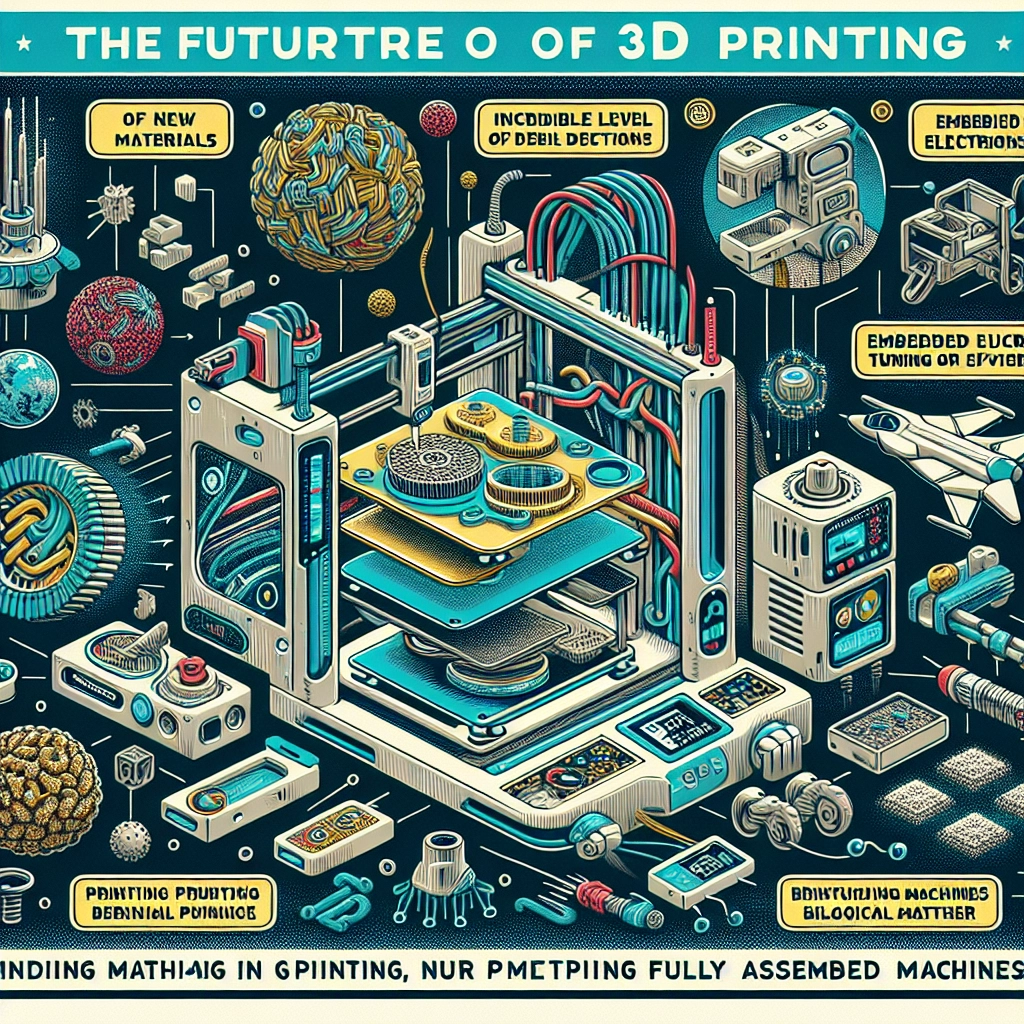The Future of 3D Printing: Predictions and Trends to Watch
If you’ve ever marveled at the creation of complex structures or custom gadgets emerging from a 3D printer, you’re not alone. What once seemed like a sci-fi fantasy is now tangible reality, changing the way we manufacture, design, and even personalize products. As we look to the future, it’s exciting to consider where this technology is headed. Let’s dive into some predictions and trends in the world of 3D printing that might just reshape industries and everyday life.
Mass Customization: The Age of Personalization
One of the biggest trends to keep an eye on is mass customization. Gone are the days of one-size-fits-all. With advancements in 3D printing, companies can create products that cater to individual preferences. Think of shoes, eyewear, or even home furnishings designed specifically for you. This trend is already beginning to take shape with brands like Nike and Adidas offering customizable sneakers.
In the future, we may see a world where you can design your own products online, and they are 3D printed and shipped right to your door. Imagine adjusting the fit of your new running shoes or altering the color of your phone case with just a few clicks! This level of customization can enhance customer satisfaction and foster loyalty, ultimately pushing businesses to adopt more flexible manufacturing processes.
Sustainability: Eco-Friendly Innovations
Another promising direction for 3D printing is its potential for sustainability. Traditional manufacturing often results in significant waste due to excess materials. In contrast, 3D printing builds objects layer by layer, using only the necessary materials, which substantially reduces waste. With growing concerns about environmental impact, many companies are turning to bio-based and recycled materials for 3D printing.
Imagine a future where homes are constructed using 3D printed materials made from recycled plastics or even biodegradable substances! As the technology develops, 3D printing could play a vital role in promoting sustainable practices across various industries, from fashion to construction. This not only benefits the planet but also opens doors to innovation in materials science.
Healthcare Innovations: A Personalized Approach
The healthcare sector is already reaping the benefits of 3D printing, and this trend is only expected to grow. From creating patient-specific implants to producing anatomical models for surgical planning, the applications are seemingly endless. Predictive advancements suggest we’ll soon see 3D bioprinting, where living cells are printed to create tissues or even organs for transplant.
Imagine a future where patients receive organ replacements custom-built just for them, matching perfectly without the need for lengthy donor lists. This would not only save countless lives but could also lead to more efficient and successful surgeries. While we’re not quite there yet, the research happening today is setting the stage for revolutionary breakthroughs in personalized medicine.
Construction and Architecture: Building the Future
3D printing isn’t limited to small-scale projects; it’s starting to make waves in the construction industry too. Companies are experimenting with large-scale 3D printing to build homes and infrastructure faster and more affordably. The idea of “printing” buildings in a matter of days – or even hours – is gaining traction.
This could not only make housing more accessible but also respond to urgent housing crises in regions affected by natural disasters or poverty. The flexibility of 3D printed buildings also paves the way for more innovative architectural designs that challenge traditional construction aesthetics.
Integration with Other Technologies
As we advance, 3D printing won’t operate in isolation. Instead, it will integrate with technologies like artificial intelligence, machine learning, and the Internet of Things (IoT). For example, AI could optimize designs for 3D printing, leading to improved production efficiency and quality. Smart factories may deploy 3D printers that communicate with one another, functioning as part of a fully automated production line.
With these interconnected technologies, we could enter an era where design is not only about aesthetics but also about functionality and efficiency, creating smarter, more user-centric products.
A World of Possibilities Awaits
The future of 3D printing is bright and brimming with possibilities. From personalized products to sustainable practices, healthcare solutions, and architectural innovations, we stand on the brink of a transformative leap that could redefine our world. As we embrace these advancements, it’s crucial to consider the balance between innovation and ethical implications.
While the future of 3D printing holds a lot of promise, it will be essential to navigate challenges and ensure that these technologies serve society as a whole. As we look ahead, let’s gather around the potential of 3D printing—grounded in creativity, sustainability, and a vision for a better tomorrow.

